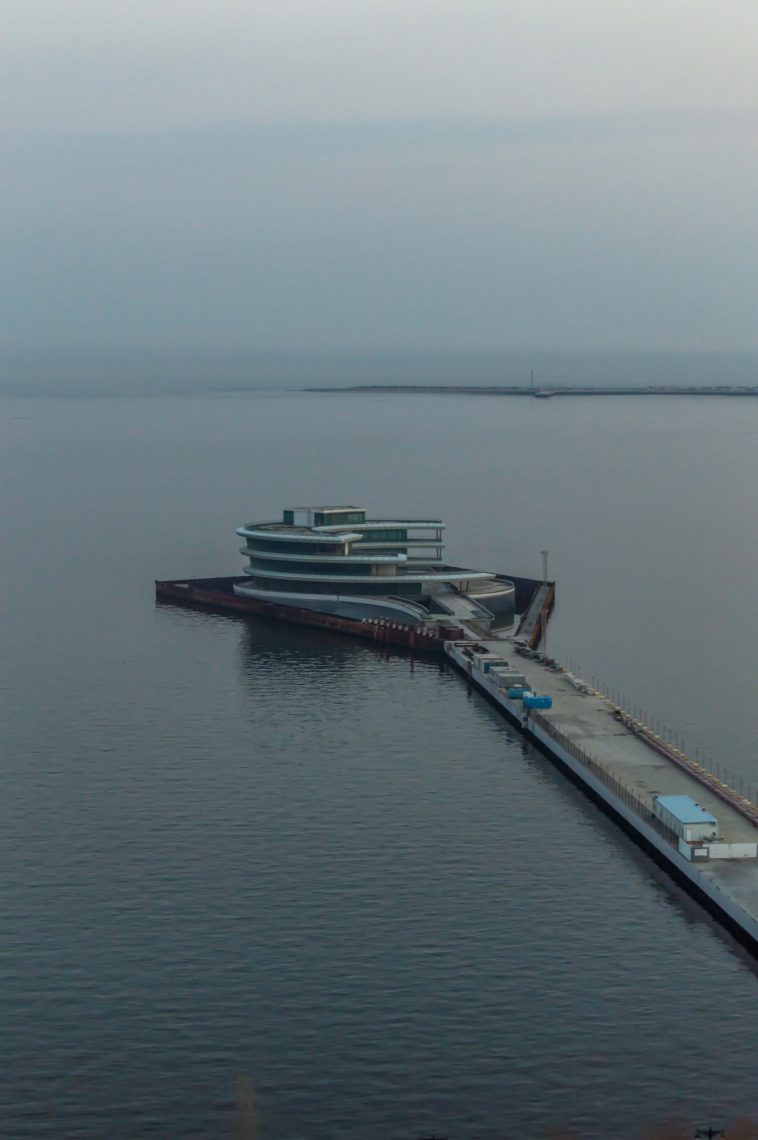The Caspian Sea holds the title for being the planet’s most expansive landlocked body of water in terms of its surface area. Although its designation oscillates between being termed a “lake” and a “sea,” it remains a noteworthy geographical feature. Occupying a surface area of approximately 371,000 square kilometers and possessing a total volume of 78,200 cubic kilometers, it is undeniably vast. Another notable characteristic of this water body is that it is endorheic, meaning it lacks any external drainage systems, such as rivers or streams flowing out to other seas or oceans.
Geographical Boundaries
The Caspian Sea is enveloped by multiple nations on its periphery. Specifically, Russia defines its northwest boundary, Azerbaijan lies to its west, Iran occupies the southern fringes, Turkmenistan can be found on its southeast border, and Kazakhstan marks the northeastern limits. Each of these countries plays a significant role in the ecological and geopolitical dynamics surrounding the sea.
Geological Features
The Caspian Sea is not just large; it is ancient. Geological records indicate that it is a remnant of the Paratethys Sea, which existed millions of years ago. Furthermore, it is situated in an endorheic basin, making it unique among large water bodies as it doesn’t flow into any ocean or sea. This lack of an outlet has implications for its salinity levels and biodiversity. Although it is called a sea, its salinity is less than that of oceanic water, largely due to its isolation and lack of exchange with other bodies of water.
Biodiversity
The Caspian Sea is home to a wide array of species, both plant and animal. Its most famous resident is perhaps the Beluga sturgeon, a species critically endangered and known for producing the luxurious delicacy known as Beluga caviar. In addition to the sturgeon, the sea supports a myriad of other fish species, crustaceans, and various forms of plant life. The rich biodiversity has drawn the interest of biologists and conservationists alike, leading to multiple ecological studies and conservation efforts.
Economic Importance
The economic implications of the Caspian Sea are monumental for the countries that share its shores. It serves as a significant source of fisheries and aquaculture, particularly in the production of caviar. Beyond its aquatic life, the sea is also rich in oil and natural gas reserves. Several countries have invested heavily in the exploration and extraction of these resources. The sea also holds importance for transportation, acting as a corridor for trade and transit between the countries that encircle it.
Political Landscape
Given its resource-rich nature and strategic location, the Caspian Sea has been the subject of various geopolitical conflicts and agreements. In 2018, the five surrounding nations (Russia, Azerbaijan, Iran, Turkmenistan, and Kazakhstan) signed the Convention on the Legal Status of the Caspian Sea, which aims to resolve issues concerning territorial rights and usage of the sea’s resources.
Climate and Environmental Concerns
The climate surrounding the Caspian Sea is diverse, ranging from arid conditions to temperate climates. However, it faces several environmental challenges, including pollution and overfishing, which have led to a decline in fish populations, particularly the sturgeon. Climate change has also started to affect water levels, which have been fluctuating more erratically in recent years.
Summary Table
| Feature | Details | |
|---|---|---|
| Geographical Coordinates | Longitude: 50.0 to 55.0 E, Latitude: 36.5 to 47.5 N | |
| Climate | Ranges from arid to temperate | |
| Surface Area | 371,000 square kilometers | |
| Volume | 78,200 cubic kilometers | |
| Countries Bounded By | Russia (NW), Azerbaijan (W), Iran (S), Turkmenistan (SE), Kazakhstan (NE) | |
| Official Languages of Bordering Countries | Russian, Azerbaijani, Persian, Turkmen, Kazakh | |
| Economic Importance | Fisheries, Oil and Gas Exploration, Trade Corridor | |
| Predominant Religions in Surrounding Countries | Islam, Christianity | |
| Continent | Asia, Europe (Transcontinental) | |
| Currency of Bordering Countries | Russian Ruble, Azerbaijani Manat, Iranian Rial, Turkmenistan Manat, Kazakhstani Tenge |
By delving into its geographical boundaries, geological features, biodiversity, economic importance, political landscape, and environmental concerns, it is clear that the Caspian Sea is a multifaceted and crucial element in the world’s geographical and geopolitical landscape.





